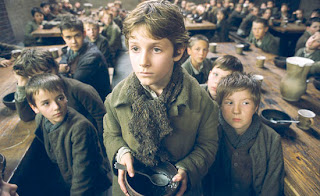

Early on when I was living at Gray Knob, a beautiful little cabin at 4,400 feet on the Nowell Ridge of Mt. Adams in New Hampshire, I used to have a lot of fun at meal times. Of course, when you are living three miles and three thousand feet above the nearest road, hauling, cooking, and eating good food is always on your primary agenda. We had a two burner propane stove with a stovetop oven, which allowed us to cook pretty much anything we wanted. Couple that with an ice cave and a insulated tin box, and we could roast turkeys, bake bread or quiche, and make a mean eggplant parmesan.

Serving up dinner was always a time of wonder for visitors who had sweated all day to get to the cabin, carrying their Backpacker's Pantry or Mountain House foods. Inevitably, you'd end up sharing your food with some of these folks, even a can of beer from the six pack that was carefully hidden in the ice cave. On Thanksgiving in 1982, we even cooked an entire Turkey Day dinner with all the fixins for every person who showed up.
But we earned every bite of that food. Eating our "luxury meals" required a hike down the mountain, a 16 mile round trip to the IGA, then some careful packing of 60-80 pounds, and finally the hour and 40 minute grunt back up the mountain (when in mountain shape).
Now I hear about an April
article in the LA Times that told a story of real outdoor luxury. I read it and it seems to describe the worse kind of cartoon caricature.
"We're just not the camping kind of people. We don't pitch tents. We don't cook outdoors. We don't share a bathroom. It's just not going to happen," she said. "This is a kid who has never flown anything but first class or stayed anywhere other than a Four Seasons."
"It's not about experiencing what Lewis and Clark did," said Milton Pedraza, chief executive of the Luxury Institute, a New York-based research company. "It's about enjoying nature and all the comforts that come with the luxury lifestyle. They see it as one big seamless, wonderful experience."
I'm all for heading to a mountain resort or a deluxe fishing lodge if you have the means and want to be pampered. They used to call these places in the West "dude ranches", and they were for city folks who had the means and the will to "rough" it.
I wonder how different things are today from those golden days of dude ranching. I think the difference is in 1922, you went to a dude ranch to experience nature, and that was the best venue for wealthy city dwellers.

But let's not pretend that the resorts and experiences described in the Times article are, for many people who visit them, anything other than a self indulgent exercise, with nature perhaps best serving as a bragging point at the next tennis club cocktail party. You're not getting a real outdoor experience when a butler finds the elk for you and drives you out to them, or when your tent costs $650 per night (double occupancy FAMP). Remember too, you could upgrade to a luxury mountain home with hot tub for up to $3,460 a night.
It just doesn't pass the muddy boots/hands test.
In addition, I think I'll stay away from buying futures in smore (as described in the article) production. I'll stick to doing it myself.








































